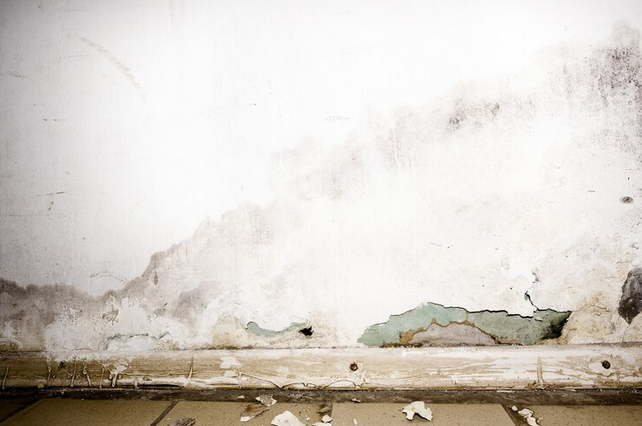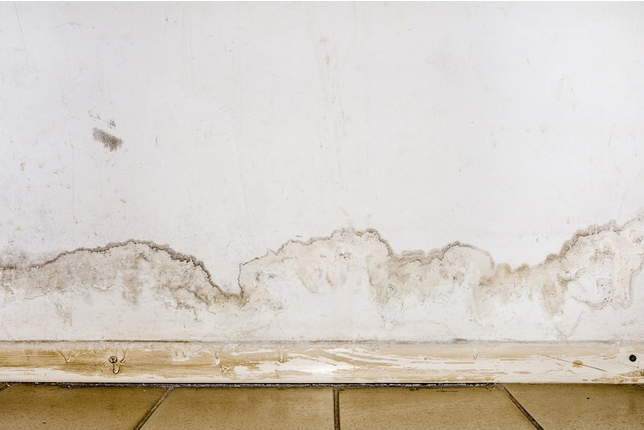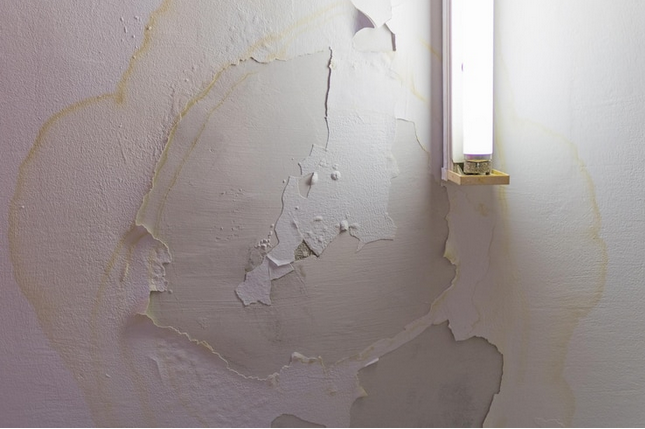How to tell if water damage is new or old?
Ways To Tell If Your Water Damage Is New Or Old
Are you looking to try to figure out whether or not you are dealing with new or old water damage? Water damage can be a very scary term for any property owner. This is especially true if you are a homeowner living on a property with sustained damage. It requires immediate action. However, before sounding any alarms, you need to determine whether or not it’s new or old water damage. This is a very useful bit of information. Not only can it inform you how long it’s been there, but it can also help you figure out how serious of a problem you have and how fast you need to act. Any newer issues are typically (but not always) easier to fix.

Signs of new water damage would be a single dark water spot. The surface will typically feel firm to the touch.
Signs of old water damage will typically have dried and older water rings on the surface and the surface will feel mushy because it’s already deteriorated.
If you have mold, you will see tiny black or grey specs.
Within this article, we will look at how to determine the age of sustained water damage. Some of the biggest factors we will look at are your home’s history and some of the physical signs that can help you pinpoint the age of the damage. You will find that water damage can appear in a lot of different ways. Because of this, it always requires a thorough inspection. We are professionals who can properly care for your home’s routine maintenance and any repairs you need.
Use These Steps To Determine The Age Of Your Water Damage
1. History Of The Home
The first thing you want to consider is the history of your home. If you want to figure out if the water damage you are looking at is new or old because it can be important to how you repair it. You want to be very observant when it comes to your home. Do you ever notice any leaking during storms? Have you in the past? It’s good to get to know the ins and outs of your property because the smaller leaks can end up taking a very long time to become visible. If you can spot what is old and what’s new, it will give you a much better ability to repair and treat the damage.
2. Touch It
You want to touch the spot where you’ve located the damage. This is an important step to take because it will give you a lot of information in regards to how much damage has already been done. If it’s newer, it wouldn’t have deteriorated the material quite yet. Older damage is going to not only have rings around it, but it’s also going to feel soft to the touch. You can typically tell how old it is by the number of rings. The more, the older the damage.
3. Examine The Materials
You want to know the different materials that make up your ceilings, walls, and more. All of these things are important to know because what you have applied to your walls can trap the water inside of the walls. For instance, if you have sealant but the water gets inside of your walls, it’s going to get trapped inside of it and cause even more problems. Even a smaller water spot can indicate that you have had a major buildup of water for some time.
4. Inspect For Mold
You need to look to see whether or not you have any mold growth occurring. Mold is a good indicator of age because bacteria need some time to colonize. If you do have mold, it means the damage is a minimum of 2-3 days old.
5. Decay
You won’t find the material decaying instantly. This is something that takes time. The materials need to be consistently exposed to excess moisture to start to decay. When you notice there has been decay, it means you have material that has been consistently exposed to water whether it be from flooring or something else.

5 Different Ways To Figure Out If Your Water Damage Is Old Or New
1. Consider The History Of Your Home
You need to look at the history of your home. Has your property experienced any damage anytime recently? For example, when did your home take on a storm or flooding? If you recently had a big storm or a flooding incident, it can help you pinpoint the exact time your home may have sustained the damage.
2. Touch The Area
You always want to throw on some gloves and start touching the affected area. This is a good idea because it can tell you a lot about the age of the damage. Any newer spots are going to be wet. However, whenever you touch them, the spot will still be firm. This means that decay hasn’t taken place yet. This confirms that the damage is new. On the opposite side of the spectrum, if the damage is old, there will be deterioration that has taken place. This means that the spot is going to feel squishy instead of firm. This means the water has damaged the overall structure of the wall or other material.
3. Look For Rings
You want to always look for rings whenever you are trying to assess water damage. Rings can be one of the biggest “tells” when it comes to age. However, you will typically only spot rings when the damage is old. If you have a dark spot located on either the ceiling or walls without rings, it’s likely newer. The older your damage, the more rings will appear around it much like when you are trying to determine the age of a tree. You can also look at the colors of the rings to figure out how old or new it is. Usually, when you have a variety of shades of rings, it means the area has been both soaked and dried off and on for a long time.
4. Look At The Materials
You will find that varying types of materials are going to sustain water damage in different ways. For example, any thick paint could trap the water. This can result in you getting significant water damage even with a small water spot. Understanding the materials of your ceilings and walls and the paint used can help you figure out what you are dealing with and how old or new the damage is.
5. Check For Mold and Decay
Each of these things is some of the worst effects of water damage. However, you aren’t going to start seeing them overnight. They take a while to take hold. Mold for instance requires several days at a minimum for bacteria to spread. Likewise, the materials in a building don’t begin to decay until they’ve been exposed to water consistently for long enough. Typically, it takes multiple exposures for the material to start breaking down. Therefore, if you are noticing that your materials and structure are weaker after a more recent leak, it could mean that your home has sustained damage in the past.
House History And Being Able To Recognize Signs
Unless you have a brand new home, you likely have a plumbing system and water system that have materials of all different ages. Unfortunately, any older drywall materials are much more prone to breaking or leaking than newer materials. Because of this, you should try to pay more attention to the older areas of your home. You want to assess these areas more regularly to spot early signs of water damage. This is where knowing your home comes into play. It can help you play defense against water damage. You always want to try to get familiar with the materials that make up your house. This can give you plenty of information that you can use to spot signs of water damage and that can help you come up with an action plan to prevent it. If your home contains brick or other harder materials, it’s going to take a lot more for the water damage to appear visibly. Whereas, if you spot signs of water damage on the wooden floors, carpet, or drywall, it can be difficult to determine if it’s old or new. Unfortunately, if you have damage on your drywall, it can be expensive to correct. These materials tend to suffer damage very easily too.

Visual Cues
You always want to check for rings when you are trying to spot signs of water damage. Rings can give you a visual cue to use. Any newer spots will be darker. However, the older the damage, the more rings start to show. If there are a lot of different rings, it’s typically a sign that the damage is older and more sustained.
Because bacteria take a while to colonize, you can get a lot of information if you spot mold. It means that your damage has been there for a minimum of a couple of days. Mold on drywall usually starts to appear as tiny black specs. You will usually notice these specs on your ceiling, walls, or floors. If you notice a lot of mold elsewhere other than the affected spot, the mold likely has been there for a while. After all, it’s starting to spread to other areas not exposed to water.
Our professional team of skilled handymen is ready and waiting to help you look after your precious home. If you notice signs of water damage, you can call us right away. If you have decay, it means your home has likely been exposed to a lot of damage over time. Decay typically only starts to occur when your home has been in extreme situations like a flooding incident.
Tactile Cues
Another good way is to touch the spot. As mentioned previously, you can tell a lot by the hardness of the spot. If it’s soft, it’s likely older. After all, the moisture has had sufficient time to start to deteriorate the material. If the affected area is hard when you touch it, it’s likely newer.

Final Thoughts
Our professional team at Mercury Drywall Repair can help make your life easier. No one wants to deal with water damage. It’s never an easy task. It doesn’t matter how old or new the damage is, it can be devastating to your home. Because of this, you want to call professionals immediately once you spot signs of damage. We can help you figure out not only what caused it, but how to prevent water damage in the future too. We can offer professional water damage repair services that can get you back to living your best life.
For more help, please call Mercury Drywall Repair Service at(816)295-7203. We have experts who can help you with termite damaged drywalls.
